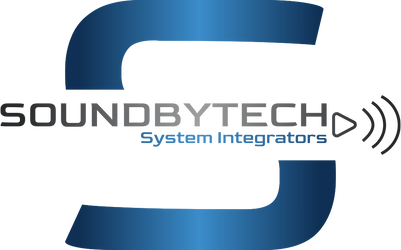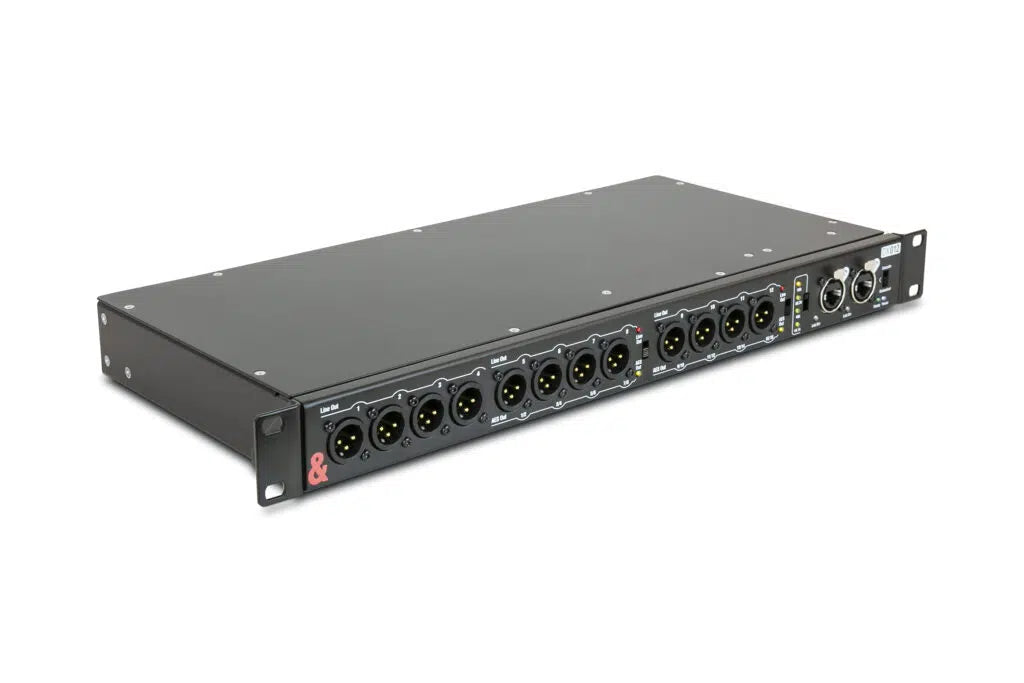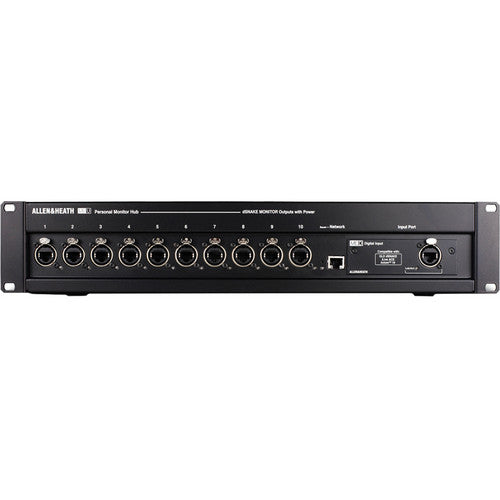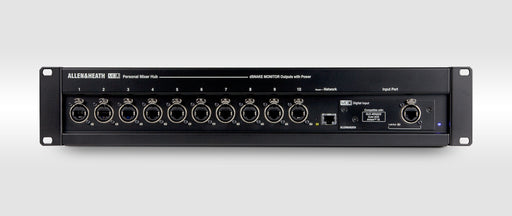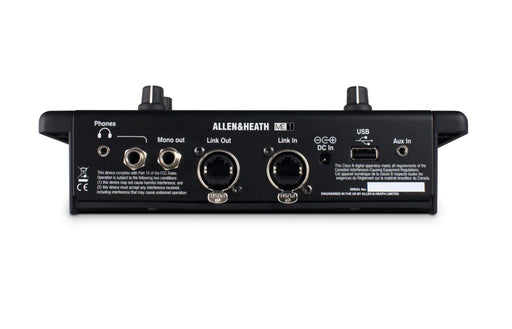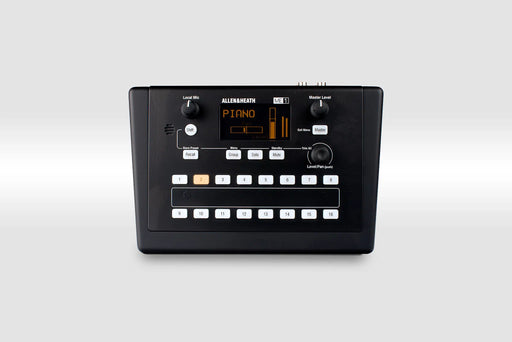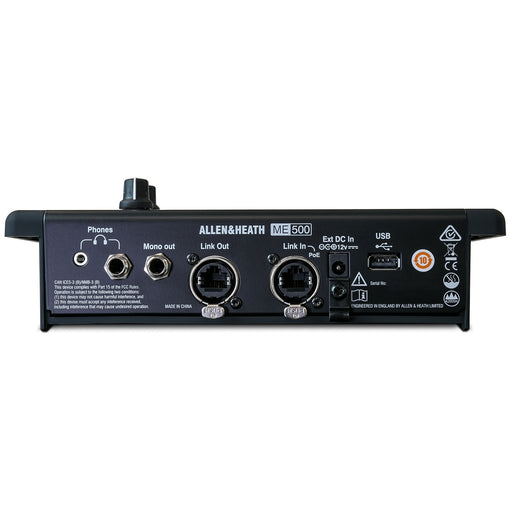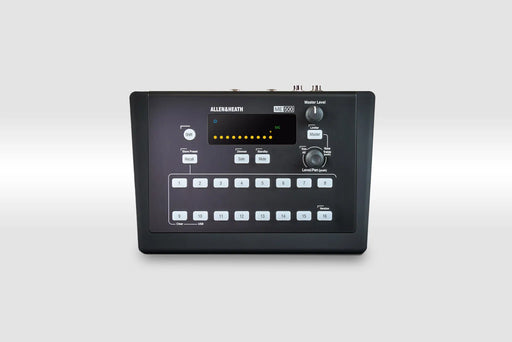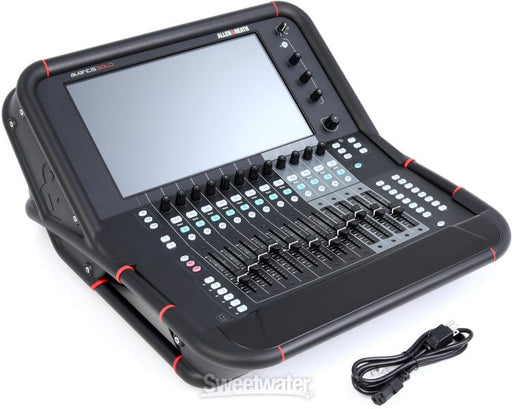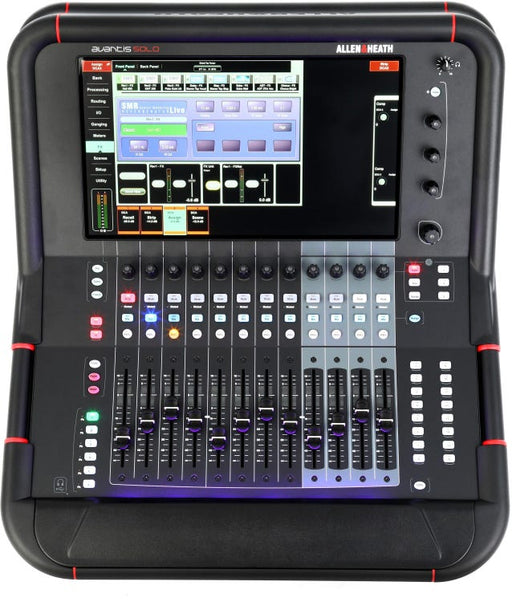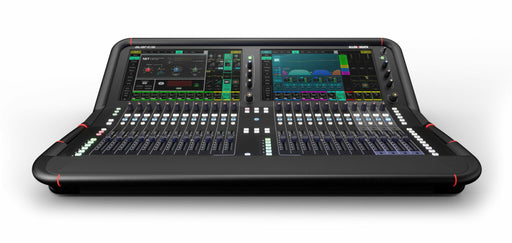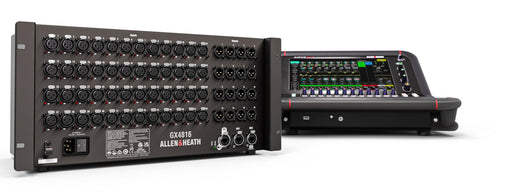The DX012 is a remote output expander / stagebox made by Allen & Heath as part of their “Everything I/O / DX” line. It is designed primarily to provide additional analogue and/or AES outputs to compatible mixing systems (e.g. SQ, Avantis, dLive, AHM‑64) over network infrastructure.
Key Features and Specifications:
| Feature | Detail |
|---|---|
| Number of Outputs | 12 XLR outputs (analogue and/or AES) |
| Output Configurations | Flexible routing: can be set to: • 12 analogue line outputs, • 8 analogue + 4 AES outputs, • 4 analogue + 8 AES outputs |
| AES / Digital Output | For the outputs configured as AES, the sample rate is globally switchable (44.1 kHz, 48 kHz, 88.2 kHz, 96 kHz) |
| Network / Connectivity | Connects to mixer or upstream DX expander via a locking EtherCon / DX port over Cat5e (or higher) cable. Has a second locking EtherCon port for redundant mode or cascade (daisy‑chaining) to allow expansion or redundancy. |
| Cascade / Redundancy | In cascade mode, you can daisy‑chain up to 2 DX Expanders on each DX port. Redundant mode allows dual cable connection for fault tolerance. |
| Distance / Cable Runs | Supports runs up to ~100 m over Cat5e (or better) cable. |
| Form Factor / Mounting | 1U high, rack‑mountable (19") or shelf/floor use via integrated rack ears. |
| Output Characteristics | • Analogue outputs are balanced, relay‑protected. • Output impedance: < 60 Ω • Nominal output level: +4 dBu = 0 dB on meter reading • Maximum output level: ~ +22 dBu • THD+N, residual noise specs are also published in tech sheets (for example, THD ~ –98 dB etc.) |
| Power / Consumption | Mains AC: 100‑240V AC, 50/60 Hz. Power consumption: up to ~35 W max. |
| Weight & Size | Dimensions: ~ 482.6 × 48.2 × 214.7 mm (19 × 1.9 × 8.5 in) Weight: ~ 2.95 kg (≈ 6.5 lbs) |
| Compatibility | Works with SQ, Avantis, dLive systems, and AHM‑64 audio matrix processors. In SQ systems, up to 16 DX012 units can be added. In dLive systems, the count limit depends on the class (e.g. up to 46 in S Class). |
| Plug & Play / Firmware | It is “plug‑and‑play” — no IP addressing needed. The mixer handles firmware updates. Firmware compatibility is managed by the host system; minimal user setup is needed. |
